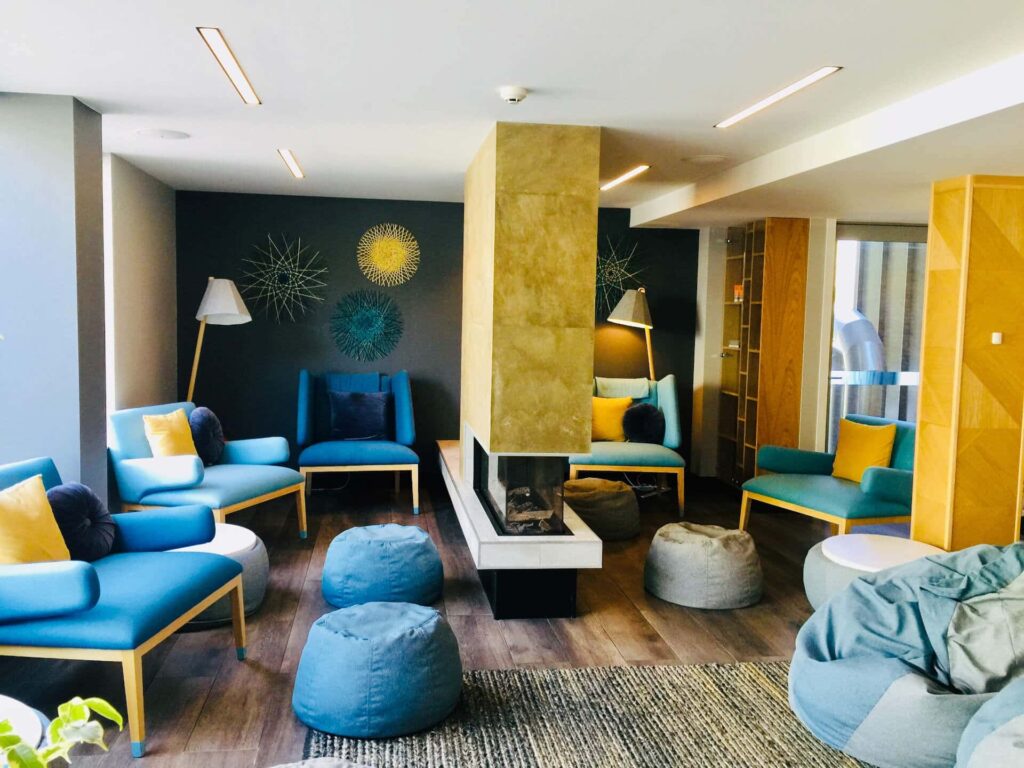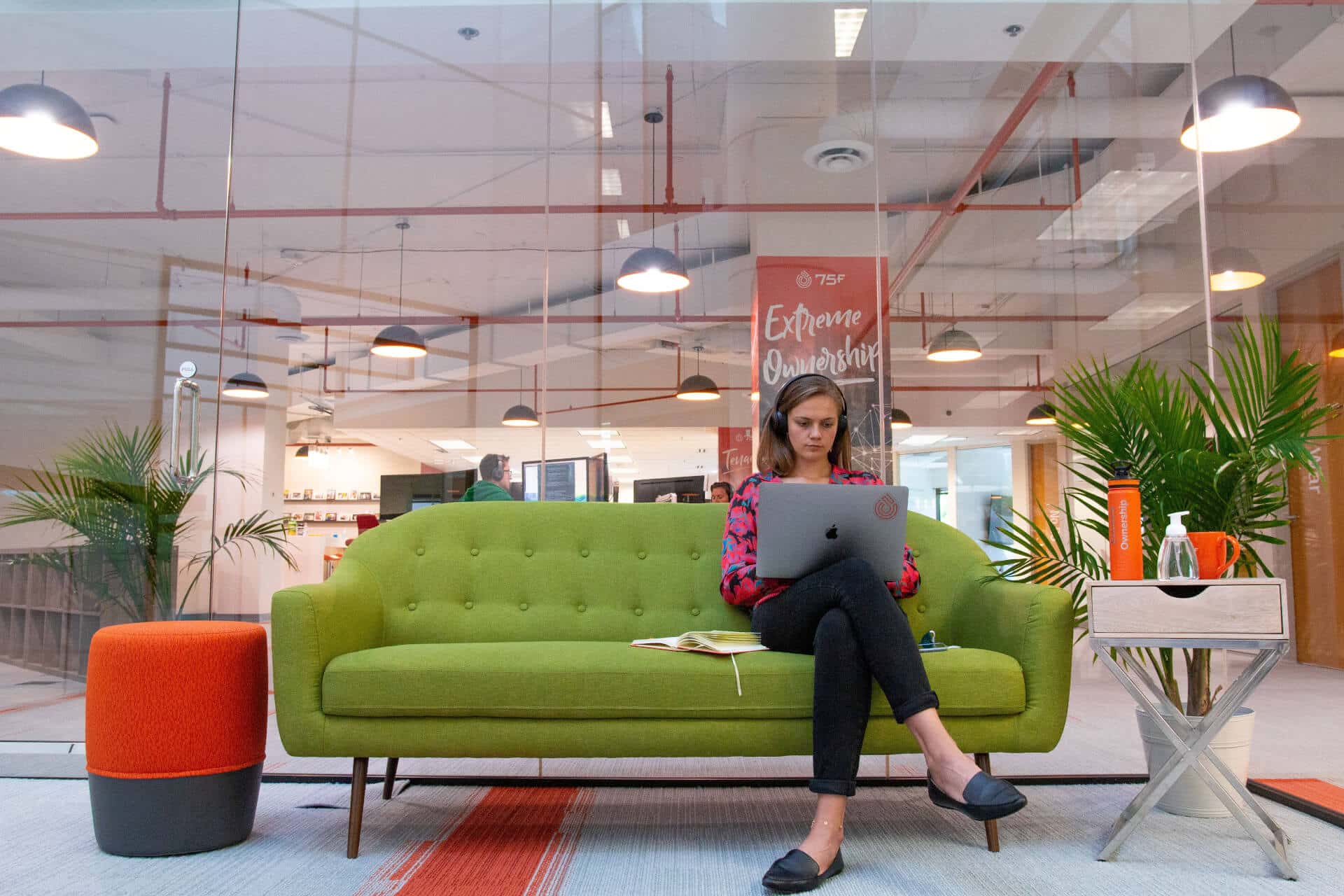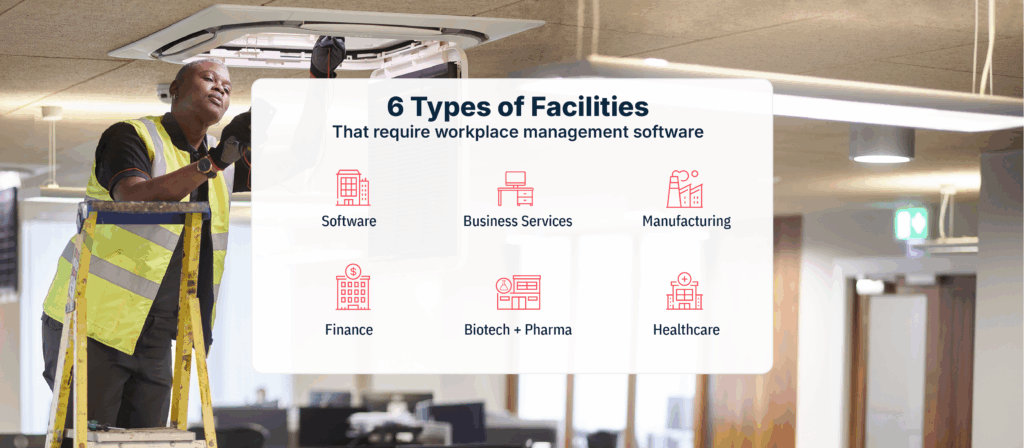ABW (activity-based working) is emerging as an efficient way to create safer and more productive workspaces in a post-pandemic world. It’s a workplace strategy that helps workers always do their best work, day in and day out, by letting their daily tasks dictate how they use the office.
In the following article, we will explore ABW (activity-based working), focusing particularly on best practices to maximize this work style.
What is ABW: Activity-based working?
ABW (activity-based working) replaces the traditional office and assigned cubicles with a variety of work settings; employees can choose where to sit and work depending on their given task (i.e.: their current ‘activity’). This is a new way of working that is linked to both greater employee satisfaction and increased productivity.
This type of workstyle requires careful ABW office design to create appropriate workspaces. This is typically in the form of shareable workstations, collaborative spaces to brainstorm, open offices, conference rooms and meeting rooms, individual desks, phone booths, and other quiet or private areas.
It also requires activity-based working software to ensure workers can always access the right kind of work environment, right when they need it.
As exemplified by Microsoft NL, Microsoft’s Amsterdam office created by Dutch company Veldhoen + Company, when facility managers (FMs) work to create the right ABW environment, companies can expect happier employees and cost savings, among other benefits.

What are the benefits of activity-based working (ABW)?
When ABW (activity-based working) is implemented properly, it offers organizations a practical way to embrace hybrid work and flexible working. In particular, ABW can be critical to successfully implementing Office Neighborhoods and agile working.
With different spaces for different types of work, employees that need to collaborate can find huddle rooms or open-plan seating one day, while selecting individual spaces or focus rooms the next. By embracing the concept of activity-based working, the office environment is no longer a static and potentially stifling space with only assigned desks. Instead, it becomes an environment that embraces and strengthens all sorts of work, and all sorts of working styles.
It’s not surprising that when office workers are able to let their type of work and personal preferences dictate where they sit, organizations experience greater employee experience, engagement, and productivity.
Finally, good ABW workplace design helps organizations to use their space more efficiently. This can lead to a reduction in corporate real estate costs, along with a more environmentally friendly office.
Of course, this can only happen when FMs are tracking their day-to-day space utilization and using it to reduce their overall square footage.

ABW workplace design best practices
ABW (activity-based working) isn’t just about a better office layout, although of course that’s important.
It’s about using the office in a collaborative, constantly-evolving way to the benefit of everyone.
To derive the most benefits from this working model, companies and FMs need to follow certain best practices, both in planning and design, as well as in execution.
Rolling out activity-based working (ABW) requires considerable collaboration
ABW (activity-based working) needs more advanced planning than just lining up some cubicles and assigning the corner office. For this reason it generally requires more collaboration in the workplace between IT, HR, and FM teams.
Before implementing this new way of working, FMs and managers will need to clarify their organizational goals. This will ensure that activity-based working (ABW) will align with them. All departments will need to be on the same page.
Just as important, employees will also need to be on the same page. They must understand the intentions and goals of this realignment. This should be done explicitly through soliciting their questions and feedback beforehand and throughout the rollout.
And when activity-based working (ABW) is finally in place, employees will need clear communication regarding any new policies and expectations.
For these reasons, it’s especially important for FMs to collaborate closely with HR, especially in the early stages of ABW.
Creating an ABW office requires good data
The great thing about activity-based working (ABW) is that you can tailor-make the office to fit your employees’ needs directly. But this requires that you actually understand your employees’ needs to begin with. And to do that, you need to know how they’re currently using the office.
That’s why FMs will need to audit their space to determine their actual requirements, before implementing this model.
This will include planning an office layout with just the right amount of open and bookable desks, along with just the right amount of coworking spaces and conference rooms, all within a working budget.
To do this, FMs will need to have a clear picture of their current hybrid workforce, along with that of the existing office environment and what needs to be adjusted.
They will also need clear data about their current space utilization. This is in addition to the ability to continue tracking it over time.
Designing the right kind of space
The right design can make or break activity-based working (ABW). Interior design is always important, but FMs need to think beyond how nice their office looks, to how well their office functions.
For example, individual desks have traditionally given workers a sense of belonging. This is along with some literal security, as a place to store personal items.
But with activity-based working (ABW), the majority (or entirety) of workers will no longer have their ‘own’ desk.
For this reason, companies that adopt ABW may want to install lockers for employees, so they can keep their personal items safe and still hang up a picture or two.
Beyond this, FMs will need to use their space utilization analytics to understand what kind of office furniture they need. An office that relies on more focused work will need more quiet spaces than ones with lots of client meetings and brainstorming sessions.
And FMs should also note that there will likely be an adjustment period. Also, their furniture needs may change over time.
Finally, effective ABW workplace design demands real-time wayfinding.
Remember, employees will be moving around the office day-to-day, depending on their tasks.
Good wayfinding can therefore make it easy for them to find what they need, while making it easier for others to find them, too.
Adopting the right technology
In order to work properly, the ABW concept requires a solid Integrated Workplace Management System (IWMS).
Specifically, FMs will need to implement technology that makes a wide variety of desk booking options easy, such as hot desking, reverse hoteling, and other flexible seating options.
Offices will also require this same level of functionality for room bookings.
As previously mentioned, interactive wayfinding and a good Visual Directory can make it easier to find these spaces.
And the right office software can also make it easier to actually book and check into them, in real time.
Ideally, this software will be easily accessible from anywhere, including on a mobile app and/or integrated with other systems like Slack and Microsoft Teams.
Note that employees in an ABW environment don’t just need to be able to book into workstations and rooms themselves. They also need to be able to instantly see where everyone else is, and where they plan to be.
This type of visibility is critical in any flexible office.
Finally, while FMs can use space management software to manage all these concerns, there are still others which will require more collaboration with IT teams.
Specifically, when personal cubicles are out the window, so are personal desktop computers.
Most activity-based working (ABW) workers will therefore rely on personal laptops. As a result, IT will need to help ensure they are working properly and safely.
This will also include educating staff about the issues surrounding cyber security in building automation systems, as well as ensuring they’re plugging in to the right network.
The activity-based working office is constantly evolving
Flexible working is not a new concept, but introducing this level of flexibility to an organization can be challenging.
FMs can work with movers and communicate with staff to ensure a smooth transition. But transitioning is only half the battle: Along with helping employees navigate their new reality, FMs will also need to monitor the office carefully to see how ABW is actually going.
After a few months, they will likely need to make adjustments, based on how people are interacting with the office.
Ultimately, the final best practice for activity-based working (ABW) is to remember that this is an ongoing process. It can always be tweaked and improved!

Does activity-based working (ABW) work?
When it’s managed well, ABW can work incredibly well for both employers and employees.
We’ve all heard of the ‘demise of the office,’ but this term gets it wrong. The office is not in decline, and it’s not going anywhere.
But the office is rapidly changing—because workers and modern realities are demanding it change.
Offices that embrace practices like activity-based working (ABW) are better equipped to navigate the future of work.
OfficeSpace can help organizations of all sizes better implement activity-based working. Reach out for a free demo.
Photos: Kelly Huang, Visual Tag Mx, Joel Lee, Canva Studio




